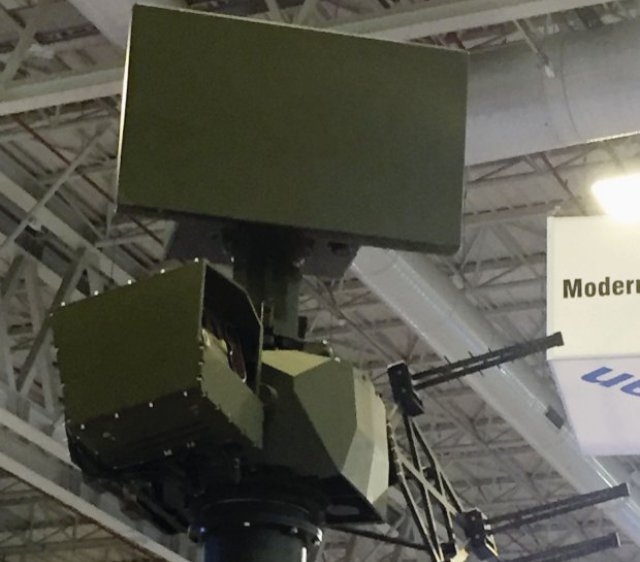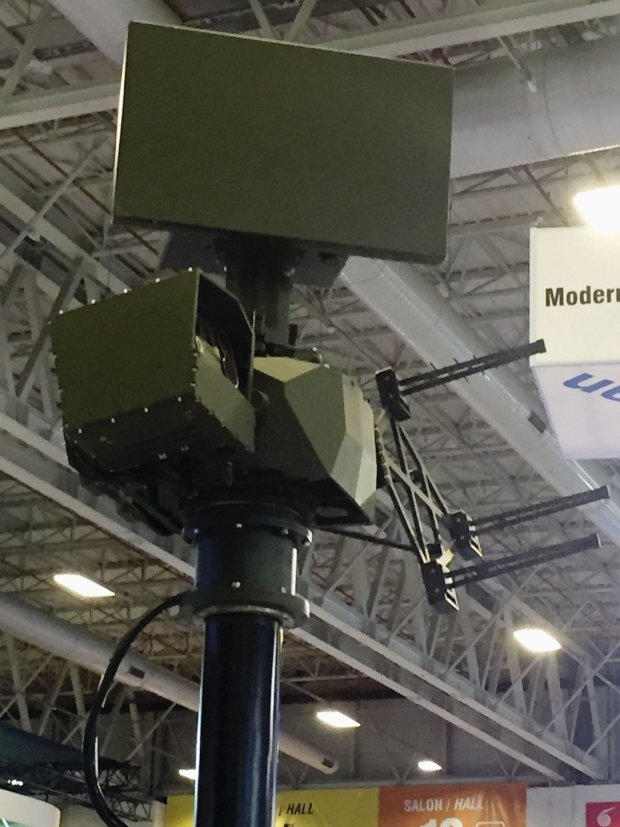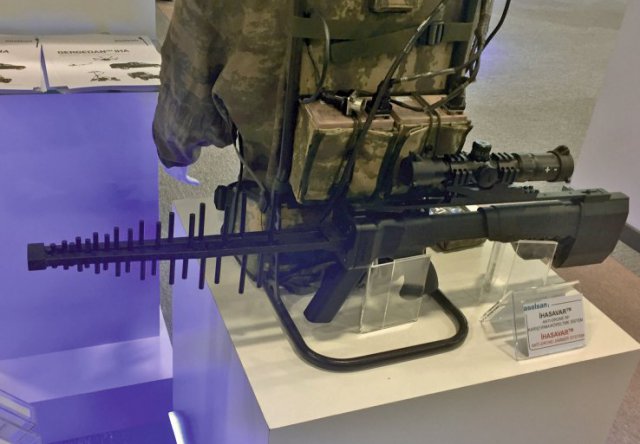
Aselsan has developed two counter-unmanned aerial vehicle (C-UAV) systems and showcased them at the 2017 International Defence Industry Fair in Istanbul.
The IHTAR is a mast-mounted integrated radar and electro-optic (EO) system with an RF jammer, designed to counter mini- and micro-UAVs in both rural and urban environments. It can be vehicle-borne or mounted in static locations.
The system uses the Advanced Capability Aselsan Radar (ACAR) as its primary sensor. This is a ground surveillance solid-state pulsed doppler radar with pulse compression and operates in the 12.5-18 GHz frequency band. It can scan 360° or a specific sector, is capable of multitarget and automatic target tracking, and has a track-while-scan capability in the surveillance mode. ACAR is claimed to be able to detect a mini-UAV with a radar cross-section of 0.5 m² at 5 km.
The radar is twinned with an EO system with both thermal imaging and daylight cameras, similar to Aselsan’s FalconEye family. This is used for the identification of targets once they have been detected by the radar.

The Aselsan IHTAR shown at IDEF 2017. The ACAR radar is the large flat panel at the top of the mast, with the electro-optic system on the left and the jammer antenna on the right. (IHS Markit/Richard West)
RF jamming is provided by the Gergedan software-defined jammer, originally developed as a remote-controlled improvised explosive device (RCIED) jammer. This provides coverage in a wide frequency band and is designed to counter radio, GPS, Wi-Fi, ISM bands, 3G and 4G, and GSM900/1800. It can provide directional jamming for specific threats and omni-directional jamming against swarm attacks, with the antenna providing a semi-spherical protection umbrella. Specific jamming frequencies can be programmed.
The IHTAR has a GIS-based command-and-control system that integrates the three elements. It enables the operator to apply filters and set specific alarm zones.
Aselsan has also developed the manpack IHASAVAR system for use against mini-UAVs, which consists of a backpack and a rifle-like high-gain directional antenna.

The Aselsan IHASAVAR showing the rifle-like antenna and sighting system with the backpack with batteries behind. (IHS Markit/Richard West)
Powered by two Li-ion batteries with an operating life of 90 minutes, it has a typical output of 50 W.
Top Photo: The Aselsan IHTAR shown at IDEF 2017. The ACAR radar is the large flat panel at the top of the mast, with the electro-optic system on the left and the jammer antenna on the right. (IHS Markit/Richard West)
Source: IHS Jane’s 360
